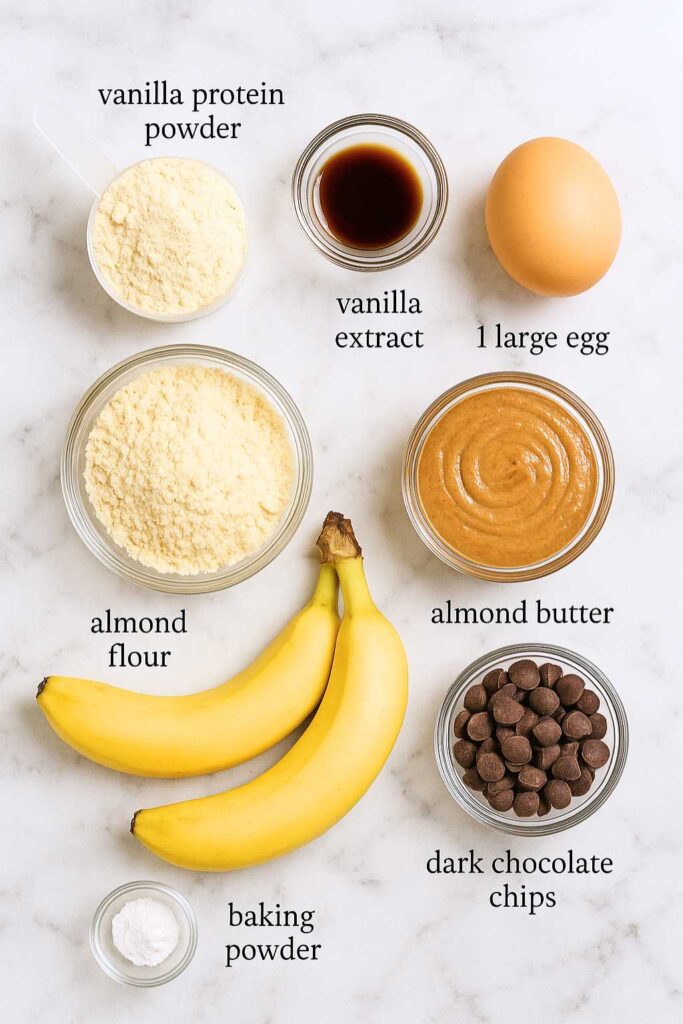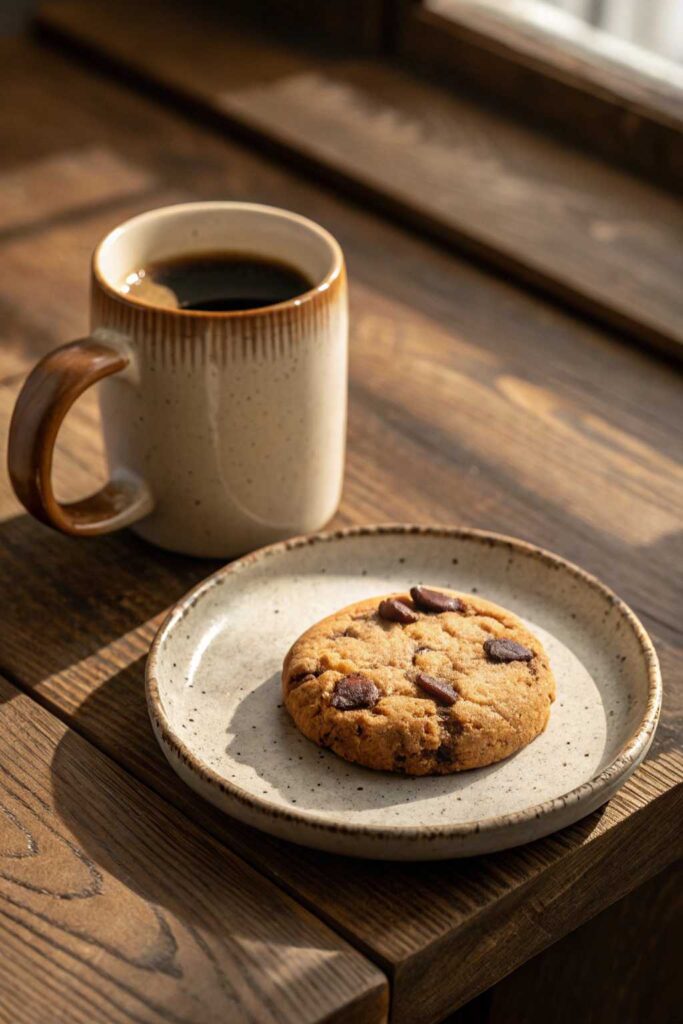I always reach for protein cookies when I need a quick snack that fuels and satisfies at once. These cookies fit right into my busy days—they give me energy without slowing me down. In this article, you’ll learn how protein cookie deliver nutrition and taste. I’ll share my own cookie‑making story, simple tips, and practical recipe swaps. You’ll also see how to make them moist and flavorful, plus answers to common questions like: what makes protein cookies last, how to stop them from being dry, and whether they really taste good. Let’s dive into everything you want to know about the High Protein Cookies.
Table Of Content
Table of Contents
My Journey with Protein Cookies
How I Discovered the Power of Protein Cookies
I can still vividly remember my first attempt at baking protein cookies at home. It was a weekend, and I had a sweet craving—but I didn’t want to sabotage the clean eating progress I’d worked hard for. Regular cookies were off the table, so I reached for some vanilla protein powder, mashed bananas, added almond flour, and gave it a hopeful try.
To my surprise, they turned out chewy, just sweet enough, and packed with energy. They didn’t just satisfy my cravings—they filled me up without the crash. That batch sparked my curiosity, and I’ve been experimenting with high protein cookies ever since. Whether I’m tweaking ingredients or testing flavors like almond butter or dark chocolate, each recipe builds on that same idea: healthier snacking should still taste like a treat.
These cookies are now a regular part of my weekly meal prep. I like to pair one with my post-workout shake, especially a glass of this chocolate-covered strawberry protein shake when I need something indulgent but nourishing. It’s a combo that feels like dessert, without the sugar overload.
Why Protein Cookies Are Always in My Pantry
Aside from taste, what really won me over is the practicality. I can whip up a batch in under 30 minutes, and they last for days. They’re ideal for lunchboxes, road trips, and even those long work sessions when you want a break but don’t want to crash from sugar.
They also helped me reimagine what “healthy” could taste like. Before that first batch, I used to think healthy snacks were bland or boring. But these cookies proved me wrong. With the right mix of protein-rich flour and natural sweeteners, a good protein cookie recipe can become your favorite go-to for quick nourishment.
On rushed mornings, I’ll often grab one on my way out, alongside something savory like a high-protein breakfast burrito. They balance each other perfectly—one hearty, one sweet.
By baking your own, you also control what goes in: no artificial additives, just simple, clean ingredients that work for your body and your lifestyle.

Protein Cookies Recipe
Ingredients
Method
- Preheat your oven to 350°F (175°C). Line a baking sheet with parchment paper.
- In a large bowl, mash the banana. Stir in almond butter and egg.
- Add vanilla extract, protein powder, almond flour, baking powder, and salt. Mix until a thick dough forms.
- Fold in the chocolate chips if using.
- Scoop dough into tablespoon-sized balls and place them on the baking sheet.
- Gently flatten each cookie slightly with a spoon.
- Bake for 10–12 minutes, or until the edges are set and centers still soft.
- Allow to cool for 5 minutes on the tray before transferring to a wire rack.
- Store in an airtight container at room temperature for up to 5 days.
Notes
- For a vegan version, use a flax egg (1 tbsp flaxseed + 3 tbsp water, let sit 5 minutes).
- Cookies freeze well for up to 3 months.
- You can substitute peanut or cashew butter for almond butter.
- Slightly underbaking helps keep the cookies soft and chewy.
What Makes Protein Cookies So Satisfying
Nutritional Value You Can Count On
When it comes to snack choices, high protein cookies check a lot of boxes. They’re rich in protein—obviously—but also deliver complex carbs, healthy fats, and just enough sweetness to satisfy. A well-balanced protein cookie keeps you full longer than a sugary granola bar or muffin. That’s because protein takes longer to digest, keeping your energy levels steady.
Depending on your ingredients, a single cookie can offer 8–12 grams of protein. That’s ideal if you’re trying to hit your daily protein goal, manage blood sugar, or avoid snacking every two hours. And when made at home, you can fine-tune macros to fit your needs—whether you’re following a low carb plan, a sugar-free diet, or simply want a more wholesome treat.
For example, using almond flour or oat flour gives you fiber and texture. Adding a scoop of protein powder boosts the nutritional profile without much effort. If you want a fun twist, try adding some cottage cheese—it sounds unusual, but it adds protein and keeps cookies moist. I’ve even used leftover cottage cheese bagels dough to craft a protein cookie recipe base. It works beautifully.
Ingredients That Make the Difference
Not all high protein cookies are created equal. The key to making them truly satisfying comes down to three things: quality protein, smart sweeteners, and healthy fats.
Start with a good protein source—whey, pea, or casein protein all work well. Then, skip refined sugar. Instead, opt for natural sweeteners like mashed banana, maple syrup, or monk fruit. Finally, choose fats that support texture and flavor, like almond butter or coconut oil. These help the cookie hold together without crumbling.
Another ingredient I love: eggs. They not only bind everything but also contribute to the overall protein content. For a plant-based version, flax eggs work too.
You can even sneak in vegetables or legumes for extra fiber. I once added a spoonful of pumpkin puree and was amazed at how soft the cookies turned out. It’s a perfect fall version—especially when paired with a warming dish like this cottage cheese pasta sauce recipe on the side for dinner.
It’s this mix-and-match potential that makes protein cookie not just healthy—but fun to make, too.

How to Make Protein Cookie Recipe Taste Amazing
Avoiding Dry Texture with Smart Moisture Tricks
One of the most common mistakes with protein cookies is dryness. Protein powder can soak up a lot of liquid during baking, leaving cookies that feel chalky or stiff. But with a few easy tricks, you can bake soft, chewy cookies every time.
The first fix is to add moisture-rich ingredients. Greek yogurt, mashed banana, or even applesauce can make a big difference. Just a couple of tablespoons help soften the texture without watering it down. Nut butters like almond or cashew butter not only add fat but also improve chewiness.
If your protein cookie dough feels too thick or crumbly, adding a splash of almond milk or a touch of yogurt can make it smoother and easier to shape. Texture at this stage matters—if the dough is balanced, the cookies will bake evenly and stay moist.
Next, try reducing bake time slightly. Overbaking dries them out fast—so take them out just as they begin to set. Let them cool on the tray to finish cooking gently.
Another trick I use often is incorporating cottage cheese. it blends smoothly into the protein cookie dough and helps retain moisture while boosting protein. This trick is the same reason ground chicken pizza crust stays juicy—it’s all about smart moisture.
Finally, don’t skip the salt. A small pinch enhances flavor and prevents the dull taste that sometimes happens with low-sugar baking.

Flavor Add-ins That Actually Work
Now let’s talk about what makes protein cookies crave-worthy. You don’t need loads of sugar—just the right ingredients in the right balance. Vanilla extract and cinnamon go a long way in rounding out the flavor. For a richer taste, dark cocoa powder is a great addition.
Add-ins like sugar-free chocolate chips, chopped nuts, or unsweetened dried fruit create texture and variation. These simple touches can turn basic dough into truly satisfying high protein cookies with layers of flavor and crunch. If you’re aiming for indulgent, a drizzle of melted dark chocolate on top goes a long way without adding much sugar.
For a fall twist, I sometimes mix in pumpkin spice and a few oats. During spring, chia seeds and lemon zest add a bright, refreshing touch.
The best part? You can adapt your protein cookie recipe as much as you like. Once you find your base, the possibilities for flavor and texture are endless—and always rewarding.
Conclusion
Protein cookies are more than just a healthy snack—they’re a chance to bake something simple, delicious, and aligned with your goals. Whether you’re trying to eat more protein, cut down on sugar, or just want a smart snack, these cookies fit the bill. With the right ingredients, a few tricks, and a little creativity, you can make batches that taste great and nourish you at the same time.
If you’re just starting, keep things simple. Try a classic protein cookie recipe using almond butter and vanilla protein powder, then tweak it to fit your taste. Once you find a version you love, that recipe might become your go-to snack solution—just like it did for me.
For even more ideas, check out my High Protein Pinterest board where I save my favorite healthy snack ideas, including every protein cookie recipe I try and love.
FAQ : Protein cookies
What are the benefits of protein cookies?
Protein cookies offer a convenient way to increase your daily protein intake. They can support muscle repair, keep you fuller longer, and help stabilize blood sugar levels. When made with clean ingredients, they’re also a smart alternative to traditional sweets.
How long are protein cookies good for?
Homemade protein cookies usually remain fresh for 3 to 5 days when stored in an airtight container at room temperature. For longer storage, keep them in the fridge for up to a week or freeze them for up to 3 months.
Do protein cookies taste good?
Yes—if made with the right balance of ingredients, protein cookie can taste just as satisfying as regular ones. Natural sweeteners, nut butters, and quality protein powder all play a role in flavor.
How to make protein cookies less dry?
Add moisture-retaining ingredients like mashed banana, Greek yogurt, or cottage cheese. Also, don’t overbake—pull them out when the edges are set but the center is still slightly soft.
What helps make cookies moist?
Ingredients like applesauce, nut butter, and eggs help lock in moisture. You can also try reducing baking time or adding a little milk to the dough if it feels too thick.
What is the best protein cookie?
The best high protein cookies is one that fits your lifestyle and tastes good to you. Look for ones made with clean ingredients, low sugar, and enough protein to satisfy—ideally 8 grams or more per serving.
Are protein cookies processed?
Store-bought protein cookies can be processed, depending on the brand. However, homemade ones give you full control over ingredients and allow you to avoid additives or preservatives.
What protein flour for cookies?
Almond flour, oat flour, and coconut flour are all great options. You can combine them with protein powder for added benefits. These flours keep cookies tender while boosting nutrition.
